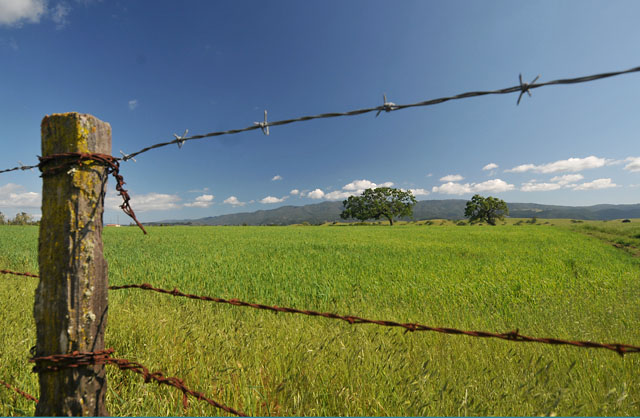The True Risk of Going Fee-to-Trust for Santa Barbara County
Santa Ynez Valley Could Face Unregulated Development

In 2010, the Santa Ynez Band of Chumash bought a large, prominent, 1,400-acre property a couple of miles away from their reservation in the Santa Ynez Valley, and now they say they want to build tribal housing. Sounds pretty benign until you pull back the curtain. The catch? They don’t want to go through the normal entitlement process like every other developer in the county. Nor do they want to conform to the requirements of the existing 100-acre zoning or the policies in the Santa Ynez Valley Community Plan — all of which they were well aware of prior to the purchase.
Instead, they want to take the property Fee-to-Trust, and they want to require the County Board of Supervisors to support them in their effort via a Cooperative Agreement the tribe drafted. And on August 20, they intend to march into the Board of Supervisors and demand just that. The threat? Give us what we want, or we are going to seek an Act of Congress that will automatically take the land out of your control anyway, so you might as well go along.
It’s not an empty threat, but it is one that all of Santa Barbara County should unite against because the ramifications for future land use regulation here will be put in serious jeopardy. For this is not just about one property. It’s about the extraordinary 1,600-acre Gainey Ranch next door to the reservation and across the road from Camp 4 that the tribe has long wanted to purchase. It’s about the properties they are interested in buying along the Gaviota Coast. And, it’s about the contaminated 645-acre Santa Susana property in Ventura County that they are trying to purchase at a bargain basement price.
The vision here, if I may be blunt, is not to build a few houses. In fact, when the tribe was looking at buying just half of Camp 4 (745 acres), they described the development potential to their members as including a 300-room resort hotel/spa, two 18-hole golf courses, and up to 500 homes of which only 150 would be for tribal housing.
And lost in all the mud-slinging from both sides of this contentious debate is just how unprecedented such a large Fee-to-Trust (FTT) acquisition would be — not just here in Santa Barbara County but in the entire state of California. In a Pepperdine Law Review Journal article published in 2012, an analysis of all on- and off-reservation FTT acquisitions from 2001 to 2011 shows that the Camp 4 conversion dwarfs the average off-reservation request and is larger that all the off-reservation acres that were converted FTT for that entire decade.
And that’s where the second shoe drops. If the tribe is allowed to set a precedent of this magnitude, we could very likely see a wave of large-scale acquisitions, not just in our county but across the state — land that will be removed from the tax roles and exempt from all county and state regulatory control in perpetuity.
I want to be clear that the tribe has the right to buy as many properties as it wants. But I, and many others beyond those who reside in Santa Ynez Valley, including those who have worked tirelessly to protect the Gaviota Coast, believe that the tribe should be treated as any other developer and be required to go through the same entitlement process, however flawed. Diversification is good business for the tribe. Wholesale exemption from environmental rules and removal from the tax base in perpetuity is bad for everyone else.
Supervisor Doreen Farr is correct in her clear opposition to having any more lands taken off the tax rolls and into trust. She knows that the only hope this county has in getting the governor and the state attorney general to oppose this conversion is if the county stands in opposition first. But it’s not just about tax rolls and money. It’s about everything Santa Barbara County has fought so hard to preserve. As a county, we need to stand together. And I hope that Farr’s fellow supervisors see the bigger picture and support her.
Susan Jordan is the executive director of the California Coastal Protection Network, a 501(c)(3) dedicated to the protection of the California coast. She is a former member and chair of the Santa Barbara County Planning Commission and the recipient of numerous awards for her nonprofit work. She also worked to prevent the construction of a landfill next to the Pala Reservation in northern San Diego County and to pass SB 18 (Burton) to increase protections for Native American resources in local general plans.



